Convenience Centers are critical infrastructure to manage discarded materials properly, keeping communities cleaner and safer. A well-thought-through plan with a holistic
approach will sustain your community for decades.
By Ryan Duckett, PE
Publicly owned Solid Waste and Recyclable Material Collection Centers (aka Citizen’s Convenience Centers) serve areas without the population density to support public
curbside collections. This centralized drop-off approach is typical for suburban or rural areas and is generally a drive-in facility where waste material is aggregated and transferred elsewhere.
The sites may collect everything from general MSW (typically residential household bagged trash) and traditional single-stream recycling, to hard-to-manage or hard-to-recycle special materials such as household hazardous waste. Some of these facilities even allow commercial, agricultural or institutional waste disposal.
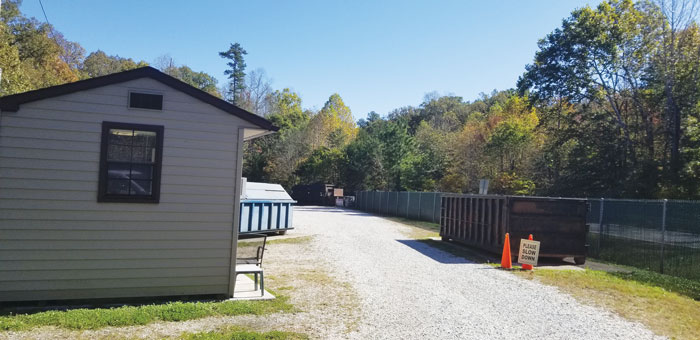
citizen’s convenience center. One-way traffic flow and location partially in DOT right-of-way makes efficient use of real estate. Images courtesy of SCS Engineers.
Frequent visits to these centers often serve as a pillar of many individual’s weekly or even daily routines. They are critical infrastructure to manage materials properly and reduce illegal dumping and litter. If implemented without proper design or consideration for the bigger context, they can be nuisance facilities, consuming time and other resources. The costs of personnel, equipment, and materials transportation and end-use can strain localities’ already limited budgets.
Accordingly, an intentional approach is critical to foster an effective and efficient solid waste management system. Long-term planning helps improve facility operational and financial performance and, of ever-increasing importance, environmental stewardship, sustainability and resiliency.
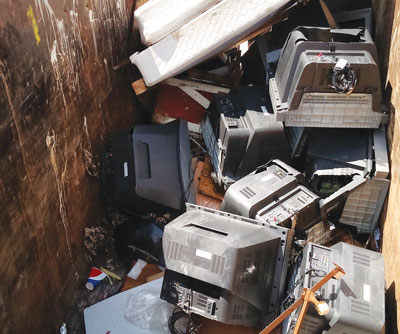
improper disposal of certain materials. In this example, not only could the Cathode Ray Tube televisions have been recycled, but also given their quantity, they also likely came from an unauthorized commercial source as well.
Long-Term Planning
Before any physical development of a new, relocated or expanded collection center, it is important for localities to consider possible future changes in the context of their Solid Waste Management Plans or other strategic planning efforts. These might include Financial Plans, Sustainability Plans, Zero Waste Plans or regional planning efforts.
Rural or suburban areas may have solid waste collection service options beyond collection centers. Residents may be willing to pay extra for curbside service, even without the typical economies of scale that make curbside collections economical. Assessment of the feasibility of using curbside collections instead of a centralized facility approach should be a standard measure before any collection center changes. Local government partnerships with local material collection and transportation providers can result in efficiencies.
For example, designated franchise zones may capture efficiencies by reducing redundant double-coverage of an area by multiple curbside service providers. These arrangements help minimize costs and environmental impacts such as vehicle emissions, noise or traffic congestion. A curbside contract approach also may allow conditions and stipulations that help achieve solid waste planning goals. Taking a hybrid approach of curbside collections in conjunction with drop-off facilities is often a sound approach.
For local governments taking the collection facility approach, public or even private-sector infrastructure, including landfills, transfer stations, MRFs and recyclers, may accommodate drop-off of select materials at their facilities to help alleviate local government costs borne from providing solid waste collection services to residents.
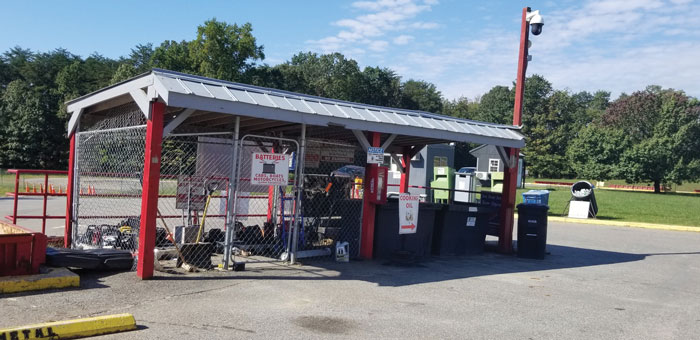
waste cooking oil or light bulbs. The facility shown here integrated several best practices for citizen’s convenience centers, including wheel stops for parked vehicles, lockable security cages for materials of value, overhangs to keep the rain off of materials and surveillance cameras.
Other Planning Considerations
A locality starts by asking itself core questions pertaining to the origin and purpose of any existing drop-off system components and consider how they fit into the future of its overall program. Is it financially sustainable? Does it operate safely and effectively? Does it achieve the waste reduction and diversion goals of the program?
Rather than expand an existing system, sometimes the best course of action is to consolidate facilities or make other fundamental changes to maintain disposal/recycling service levels while reducing costs. In this way, the long-run net cost (including opportunity cost and negative externalities) of not modernizing facilities may be reduced, even if requiring an upfront capital expenditure.
Through collaboration opportunities, local private-sector entities may provide synergies that can lessen the resources needed by small governments to provide necessary services. Examples of this include developing a public recycling center at a local MRF to forgo greenfield siting efforts for a new location, or local university collaboration with a locality to provide interns for data analysis and education and outreach activities to improve the financial viability of a collection program.
Collection centers may sometimes appear to have lower net costs to the locality on the outset when assessing site capital and operational costs, but it is important to consider that site users also incur costs in their travel to and use of collection facilities. For example, consider users’ average collective costs traveling to and from a site versus a more consolidated or more dispersed collection site system. During the site selection and design process, include queuing considerations, such as the length of vehicle storage lanes needed and the value of users’ time waiting in line for drop-off. These key considerations have potentially large, long-term effects on a particular facility’s economics or environmental impacts.
Siting and Design
Critical to the long-term viability of a collection site is careful siting and design. Localities can leverage assets such as professional real estate services and Geographic Information Systems (GIS) to find more optimal site locations and property parcels for purchase. Manual methods or algorithmic software programs can help assess geospatial “service areas” by calculating travel distances and travel times along roadways branching from a collection site. In this way, a city or county can site collection centers to provide convenient access to maximize residents’ convenience. Site geometry, size, natural/cultural features, topography, highway access, and stormwater management are just some of the considerations during the site suitability and design phase of a collection center project.
Paramount above all other considerations is safety for users and site operators. Therefore, traffic flow and site layout are key factors in providing a safe and pleasant experience for all.
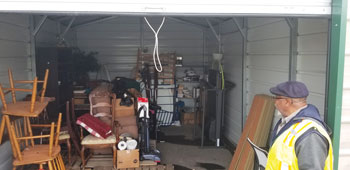
Other Siting Considerations
As fitting with their namesake, convenience center accessibility is a critical factor in siting a collection site. Geospatial analytical software provides special insight and optimization capabilities. For example, high-resolution satellite imagery, panoramic Street View software, 3D buildings/foliage featuring, and 3D modeling programs enhance engineers’ ability to make design decisions while reaping the time savings of avoided ad-hoc site visits.
The Network Analyst add-on to ArcGIS allows mathematical modeling of travel distances along roadways to assess the average travel time to current or future collection site nodes. The software can also generate service area maps of the results visualizing travel times for residents living in certain areas. These maps assist decision-makers during the planning stages of an integrated collection program to assess various service level deliverables.
Many of these same features are useful to solid waste professionals in conjunction with other software. SketchUp and others modeling programs allow for facility visualizations. Potential future new or significantly modified facilities are frequently able to be visualized in 3-D in the context of their surroundings. Visualization helps counter NIMBY and other possible public opposition concerns by preemptively adjusting aesthetic components of a particular design. Integrating architectural (primarily relating to landscaping) and sustainable design elements during solid waste facilitydevelopment helps obtain public buy-in.
Operations
Operational procedures and protocols employed at collection centers can differ greatly from program to program. Some localities elect for fully-staffed centers with discrete hours of operations to provide the highest quality experience when they are open. Others opt for 24/7 unattended sites to maximize accessibility by residents, but this tends to lead to unauthorized disposal of materials and other issues.
Other formats include partially attended sites (during peak traffic hours only), unstaffed but gated centers with “floating” part-time attendants who rotate between facilities, recyclables-only drop-off and even what essentially constitute open-top, roadside dumpsters located in the DOT right-of-way. Some facilities have installed close-circuit camera surveillance systems, which may supplement or even negate the need for in-person attendants in some situations.
At staffed facilities, attendants may assist senior or disabled citizens as necessary. Some will retrieve citizens’ waste and recyclables from their vehicles and place them into the proper collection container.
Using compactors to consolidate material before transport to end-use facilities increases efficiencies. Still, it requires personnel to cycle the compactor at an appropriate frequency so that the collection hopper does not overflow. Attendants are also essential to maintain a neat and orderly facility, as wind-blown debris may escape the open-top containers frequently used at collection sites.
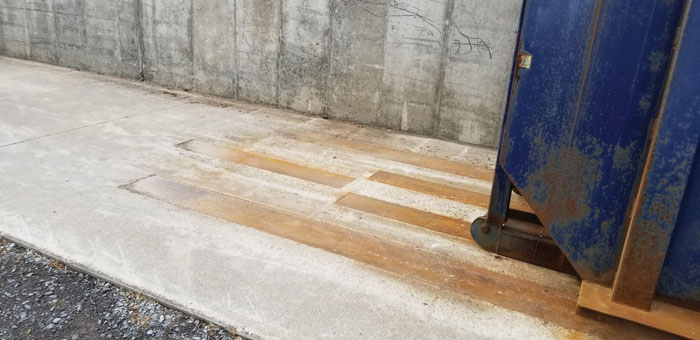
Staffing and security/access considerations feed into another important consideration: the selection of material types accepted. Will a locality collect bagged trash as well as bulky MSW? What special material types will be collected, and what special infrastructure or operational considerations might they require? Splintering recyclables collections so that individual sub-streams are gathered by material type may also benefit localities. Still, the simplicity and space-saving capability of single-stream/comingled recycling can be attractive to some localities, especially those with space constraints.
Replacing outdated infrastructure, particularly the container receptacles for drop-off collections, may come with substantial initial capital costs, but allow for reduced long-term operational costs. Similarly, retaining well-compensated, highly-engaged site attendants may reduce contamination and maintain the quality of source-separated recycling streams, resulting in a net benefit to facility economics, especially given recent global recycling impacts.
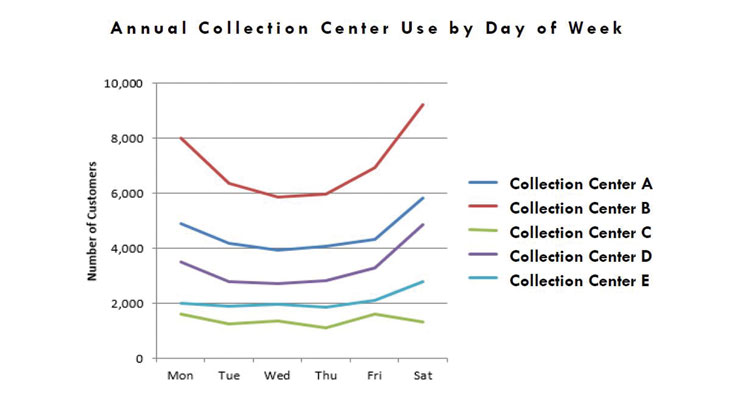
Other Operational Considerations
The selection of whether or not to compact received MSW might primarily be a function of facility use and proximity to the downstream transfer or disposal facility. Similarly, having multiple collection containers for source-separated recyclables may garner higher prices in the recyclables markets. However, they will take up additional space and might consume a site attendant’s time through the additional needed supervision and maintenance. Local governments must consider the best arrangement for them when it comes to selecting the infrastructure used at a collection site by considering the long-term operational considerations that follow.
Careful planning can help anticipate and mitigate the secondary effects of measures to enhance collection center operations. For example, switching from an open-top single-stream recyclables acceptance format to a slitted, closed container may reduce contamination of large non-recyclable items, but it may also discourage
customers from recycling their large cardboard boxes. Offering trash cans in the vicinity of a recycling area so residents may properly dispose of non-recyclable plastic bags used to transport their recyclables may reduce contamination but, ultimately, creates additional duties for often time-strapped attendants.
Maintenance of stormwater BMPs and other rainwater drainage features helps reduce run-off of sediment and possible nutrient loads from a collection site. Requirements vary from state-to-state, but most new development will need permits under local and state stormwater management and erosion sediment control (ESC) rules. Stormwater/ESC facilities appear to be more important than ever, given the increasing frequency and intensity of storm events in certain locales. Perimeter fencing helps contain possible wind-blown trash to the site footprint and reduces the likelihood of scavenging by both people and animals.
A Holistic Approach
Convenience Centers are critical infrastructure to manage discarded materials properly, keeping communities cleaner and safer. A well-thought-through plan with a holistic approach will sustain your community for decades. | WA
Ryan Duckett, PE, is a Project Engineer at SCS Engineers in Virginia. He works on various design projects, financial analyses and planning efforts to support solid waste assets such as convenience centers, transfer stations, organics processing facilities, recycling facilities and landfills. He also advises clients with collections systems, Sustainable Materials Management (SMM), and Integrated Solid Waste Management Planning. Ryan can be reached via the SCS Engineers website at www.scsengineers.com/about-scs/staff/.
Video of convenience center: www.youtube.com/watch?v=WmhQY6UWm3Y 3-D conceptual rendering of a new, expanded convenience center helps visualize the design, traffic flow, landscaping, etc. Video created by SCS Engineers, courtesy of Lincoln, NE.
